The Plough is perhaps the most famous pattern of stars in the night sky, although despite what many think, it's not actually a constellation in itself.
The Plough is a group of seven stars that in mythology form the body and tail of the mighty constellation Ursa Major, the Great Bear.
It's therefore not a constellation, but rather an asterism, which means it's a number of stars that make a recognisable shape.
The Plough has the shape of a saucepan: four stars making the pan and the remaining three forming the handle.
For more advice, read our guide to astronomy for beginners. For help photographing the Plough, read our guide to photographing a constellation.

The whole thing is about the size of your outstretched hand at arm’s length.
Because the Plough is so easily recognisable, it makes a good starting point for star-hopping, which simply means using a prominent night-sky object to help you find a trickier one.
We'll show you how to use the Plough as a signpost to other stars and constellations, but first, let's discuss how to find the Plough in the first place.
How to find the Plough in the night sky

To locate the Plough, you just need a knowledge of where north is from where you are looking.
Simply speaking, that is off to the left of where the Sun rises, or to the right of where the Sun sets.
The highest the Sun gets in any day is due south, so of course north is opposite to this.
Alternatively, you can always use a compass!
Now we have to contend with the rotating and moving Earth.
Just as the Sun rises, moves over the sky and sets, so many of the stars do the same thing at night – though not all.

Some stars stay up all night long, including those in the Plough.
As the Earth itself moves around the Sun we also see a slight shifting of stars night-by-night, which means some constellations enter and leave our skies over the course of a year.
Once again, the Plough is always there 365 days a year, due to its location and our location on Earth.
Look north in the night sky and you should be able to spot its distinct saucepan shape.
The Plough is a handy pattern to learn, and from which to launch your stargazing quest and get to know the starry skies.
What to observe within the Plough
Mizar and Alcor
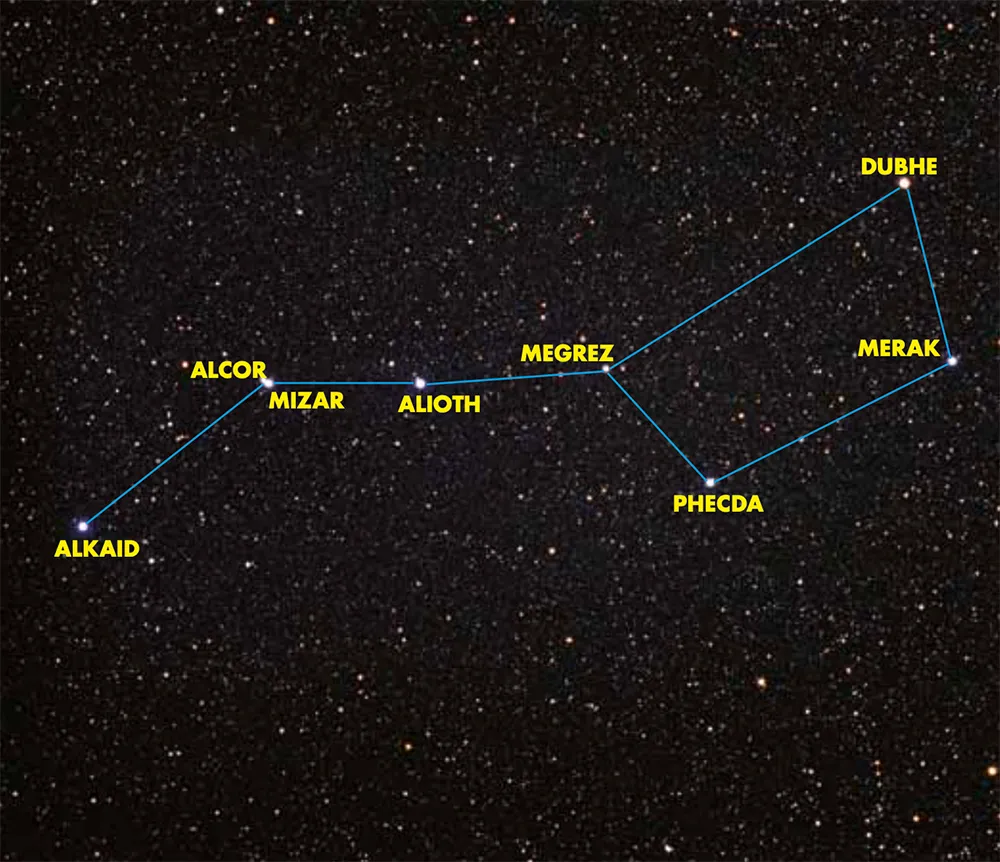
Each of the Plough’s seven stars has its own name. Notice where the star Mizar is – it’s located right at the ‘bend’ in the Plough’s handle.
This star, together with a companion that’s not quite as bright, forms a well-known double star that is visible to the unaided eye.
Apparently, at some stage it was used to test whether you had good eyesight, although how reliable that test really could have been is debatable, as Mizar’s companion is not a very faint star, and you can see it quite easily.

So what exactly are you looking for?
Well, with the Plough in its usual orientation as a saucepan sitting flat on a cooker, take a look to the top-left of Mizar at a distance of about one-third of the diameter of the Moon – that’s about one-third of the width of your little finger.
There, with any luck, will be Mizar’s companion: a star named Alcor. This is the first of many double stars that we’ll find.
For more help with this, read our guide to Mizar and Alcor.
Dubhe

Both Mizar and its companion Alcor are white stars, but on the other side of the Plough is our first coloured star.
The top-right star of the main ‘saucepan’ part has a slight orangey-yellow hue. This star is called Dubhe.
Dubhe is the brightest star in the Plough, and indeed it is also the leading star of the constellation to which the Plough belongs.
The best way of seeing its orangey-yellow hue is to compare it with the star below it in the Plough: the pure white Merak.
If you flip your sight between these two, then the orangey-yellow colour of Dubhe should be apparent.
Using the Plough as a starry signpost
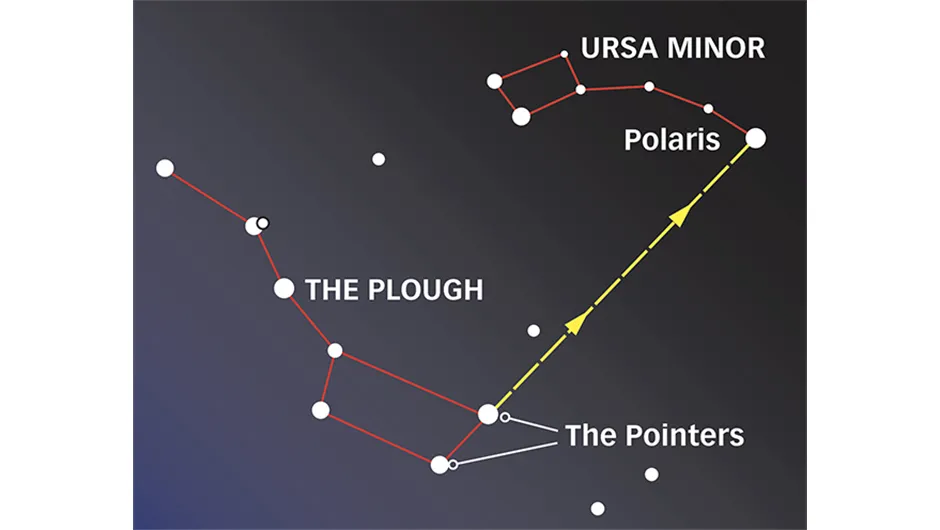
Now that you know where Dubhe and Merak are, you’ve just met two of the most useful stars in the night sky.
These two stars are known as the Pointers, because they can be extremely useful when it comes to locating other stars.
Starting with Merak, draw an imaginary line through Dubhe and keep going.
The next star of any note you come across is the very famous Polaris (also known as the Pole Star) or North Star.
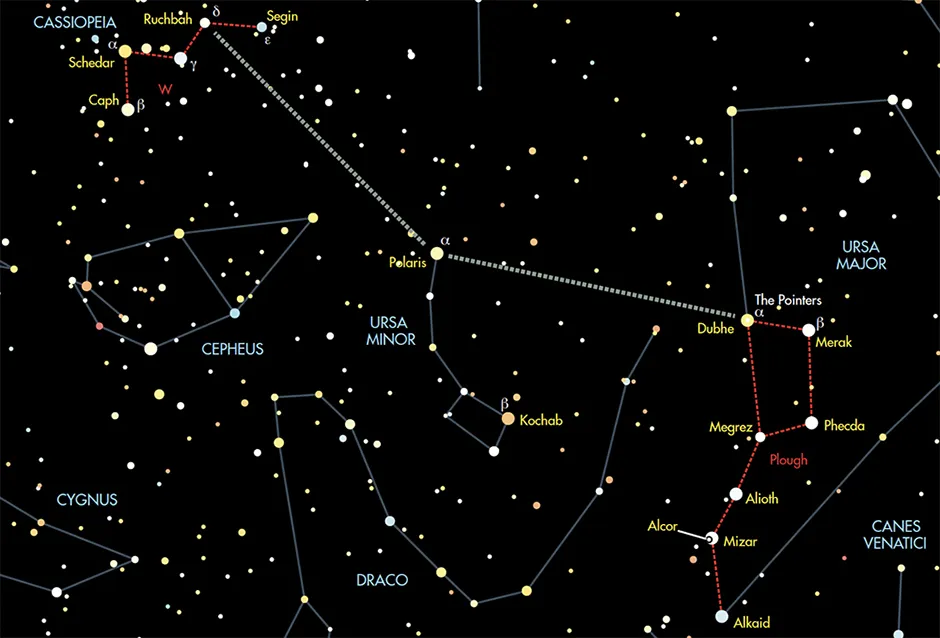
For more help with this, read our guide on how to find the North Star.
Don’t expect this to be a super-bright example of stellar marvellousness – it isn’t.
Polaris is just an ordinary-looking star.
It’s famous because it sits almost directly above Earth’s North Pole, so as we spin, this star appears to stay practically in the same place.
And that’s just the start – the Plough can help you find many more stars and constellations.
4 constellations that can be found using the Plough
The Plough doesn’t just help you to find Polaris. Here are four more stars, and their constellations, that the Plough will point you towards
Cassiopeia
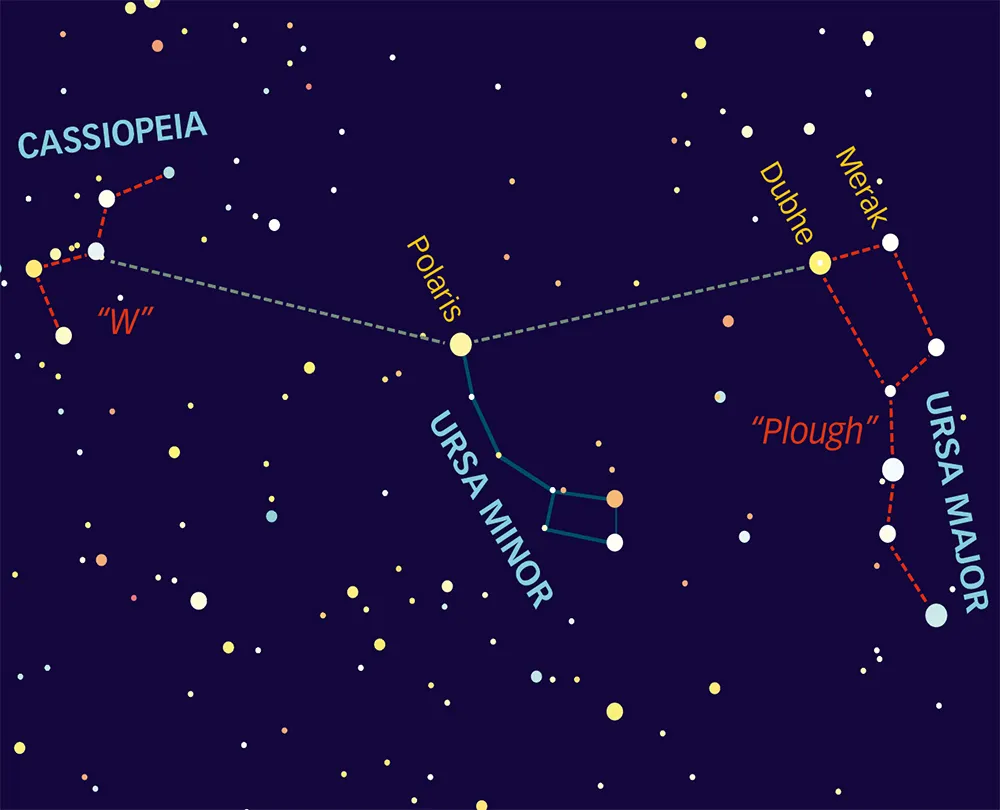
You’ve already seen how to locate Polaris. Now continue this imaginary line onwards for the same distance that you’ve already come from the Plough, take a slight bend to the right, and you arrive at the constellation of Cassiopeia, the Queen, which appears in the form of a W-shaped group of stars.
Castor and Pollux, the Twins of Gemini
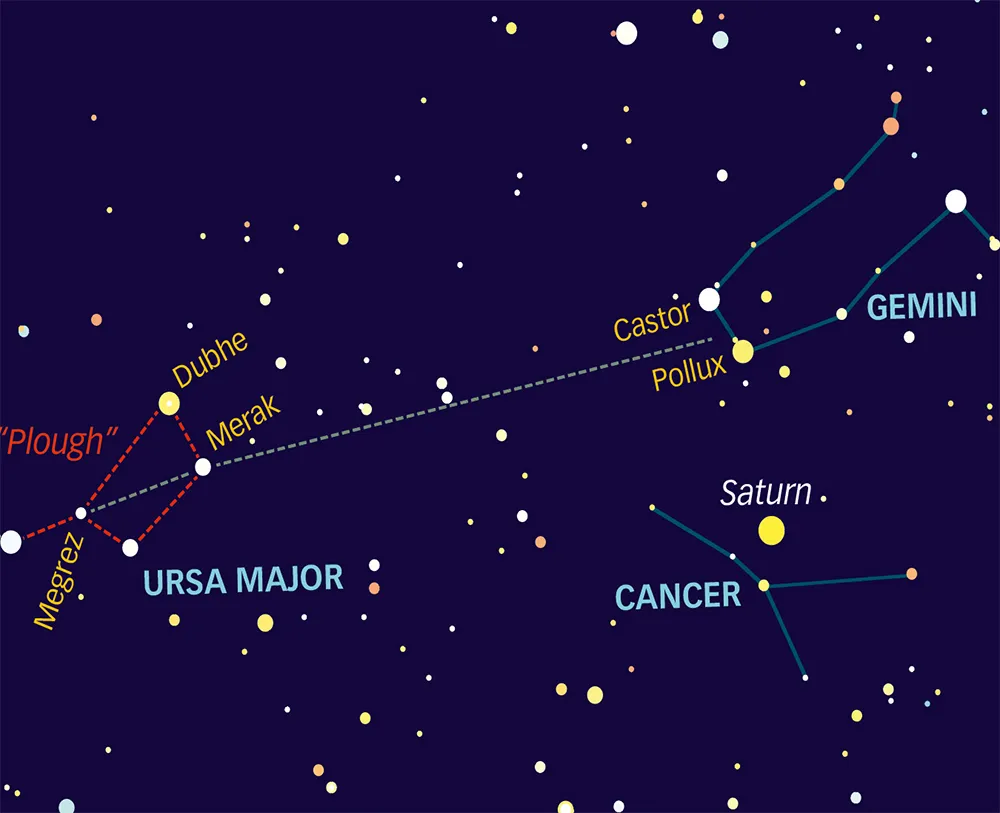
To get to Castor and Pollux, the main stars of Gemini, the Twins, start from the Plough star Megrez. Head for Merak, diagonally opposite it, and keep going. Almost halfway to your target you’ll pass the two stars that form the front paws of Ursa Major.
Regulus and Leo

To get to Leo, the Lion, you also start from Megrez, but this time trace a line through Phecda, below it in the Plough. Continuing on this line you travel to Regulus, the leading star in Leo. The head of the Lion is made by an easily seen sickle-shaped asterism of stars that works up from Regulus.
Capella and Auriga
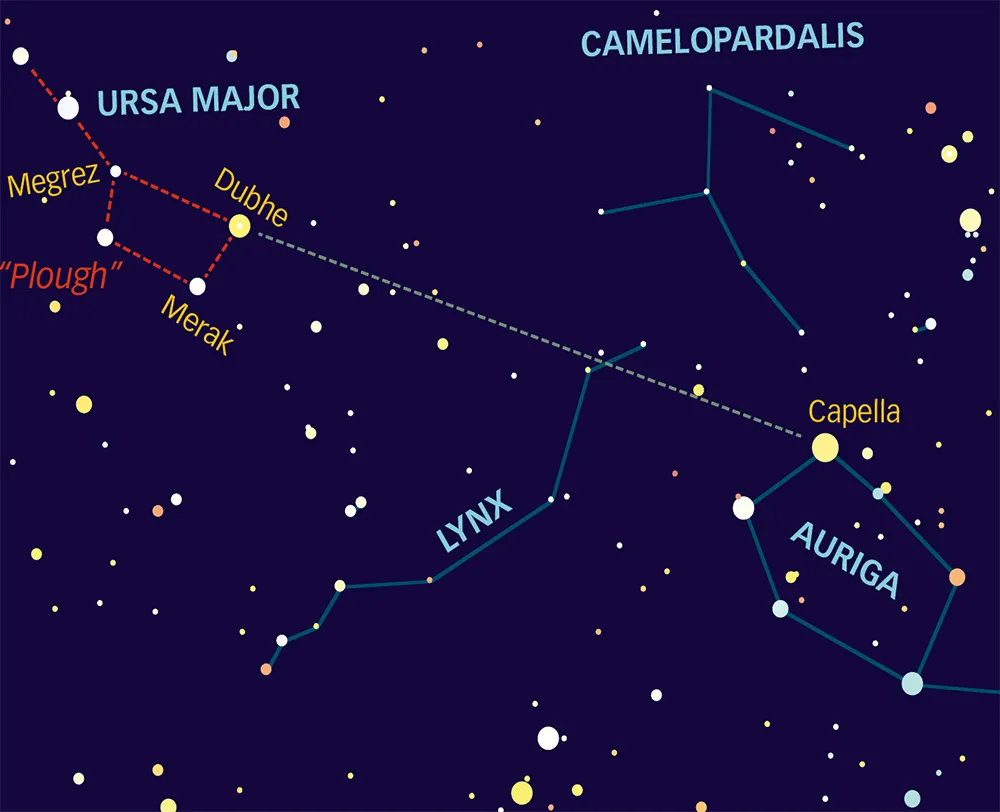
To find Auriga, the Charioteer, start again from Megrez, but this time take a route through Dubhe, to its right. After an expanse of emptiness that includes the very faint constellation of Camelopardalis, the Giraffe, you will eventually arrive at the bright yellow star Capella, the lead star of Auriga.
